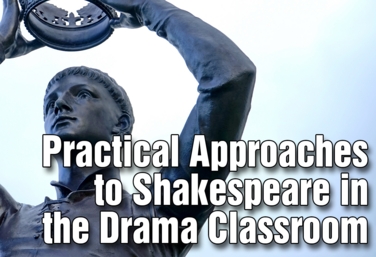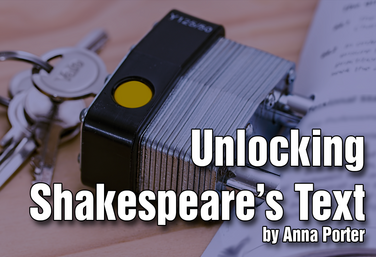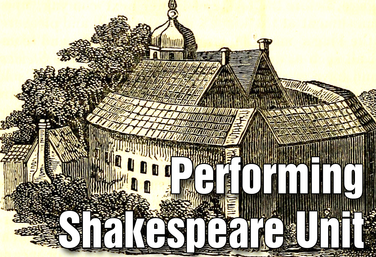Courses

Friendly Shakespeare
by Todd Espeland
.png)
Shakespeare's Toolkit
by Todd Espeland

Practical Approaches to Shakespeare in the Drama Classroom
by Julie Hartley
Units

Shakespeare Performance
by Anna Porter

Unlocking Shakespeare's Text
by Anna Porter

Performing Shakespeare
by Matt Webster
Lesson Plans
Shakespeare: Finding Emotion and Action in Text
by Anna Porter
Character Development in the Shakespearean Monologue
by Lindsay Price
Shakespearean Language: Match the Quotes
by Lindsay Price
Acting Shakespeare Style
by Lindsay Price
Jabberwocky
by Karen Loftus
Shakespeare Tableaux
by Karen Loftus
Emergency Lesson Plan: Fallen Phrase Puzzle - Shakepeare Quotes
by Lindsay Price
Shakespeare Setting and Soundscape
by Lisa Houston
Emergency Lesson Plan: Compare and Contrast (Shakespeare)
by Lindsay Price
Shakepeare's Words: Iambic Pentameter
by Kerry Hishon
Compare and Contrast: "To Be or Not To Be" on Film
by Lindsay Price
Close Reading: Shakespeare
by Lindsay Price
Resources
Character Development: Shakespeare
A Midsummer Night's Dream Character Warm-up

Drama Teacher Tune-Up 2
Acting in Shakespeare and Classical Plays
Shakespeare Insults Exercise
Shakespeare Exercise: Physicalizing the Punctuation
Shakespeare Exercise: Tomb Scene
One Question and Rubric: Shakespeare
Romeo and Juliet: Tic Tac Toe
A Midsummer Night's Dream Tic Tac Toe
Compare and Contrast (Shakepeare)
